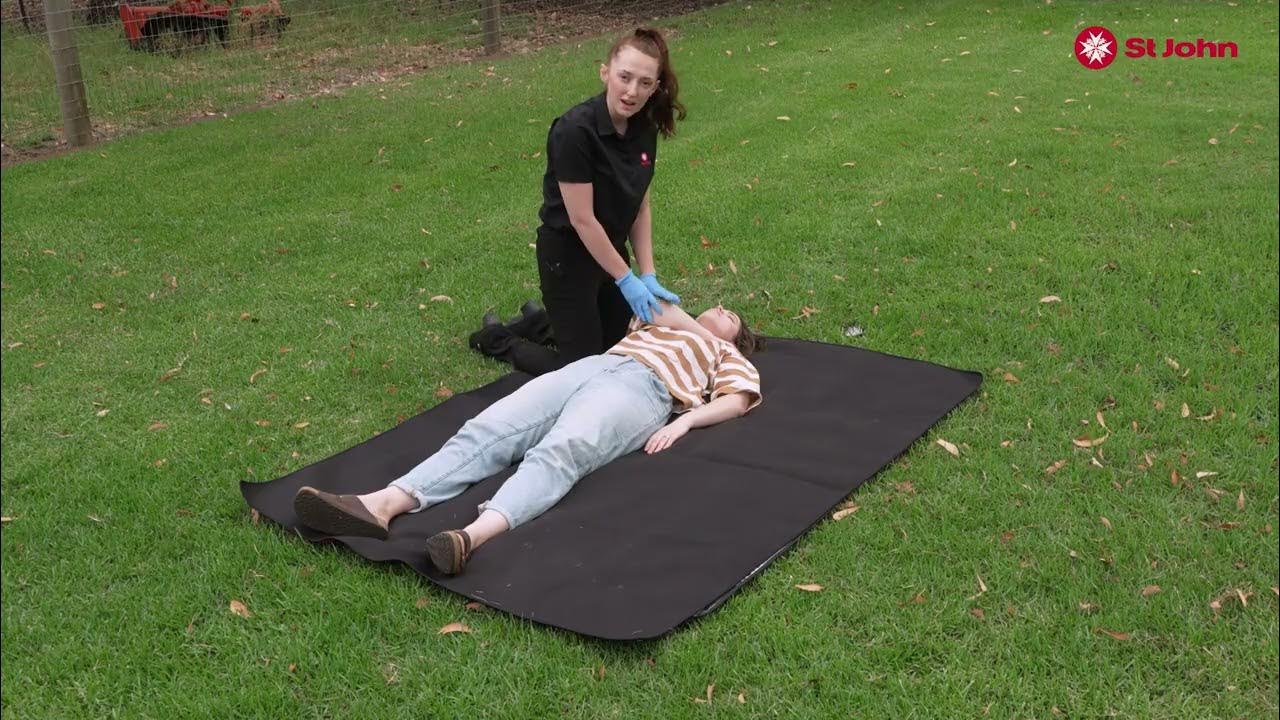The Recovery Position - First Aid Training - St John Ambulance
Summary
TLDRThis video demonstrates how to properly place an unresponsive but breathing casualty into the recovery position. The process involves clearing their pockets, positioning their arms and legs, and carefully rolling them onto their side to maintain an open airway. The casualty's head is tilted back to ensure the airway remains unobstructed. It also emphasizes the importance of calling emergency services (999 or 112) and being prepared to perform CPR if the casualty stops breathing. The video is an essential guide for basic first aid in emergencies, ensuring safety and proper care until help arrives.
Takeaways
- 😀 Ensure the casualty is unresponsive but breathing normally before placing them in the recovery position.
- 😀 Kneel next to the casualty, remove glasses and bulky items from their pockets, but do not search for small items.
- 😀 Make sure the casualty's legs are straight before starting the procedure.
- 😀 Position the nearest arm at a right angle to the body, palm facing upwards.
- 😀 Cross the other arm over the chest, placing the back of the hand against the nearest cheek.
- 😀 Lift the casualty’s far knee so that the foot is flat on the floor.
- 😀 Carefully roll the casualty onto their side while maintaining the hand pressed against their cheek.
- 😀 Adjust the top leg to a right angle to stabilize the position.
- 😀 Tilt the casualty's head back to ensure the airway stays open.
- 😀 If necessary, adjust the hand on the cheek to maintain the open airway.
- 😀 Call emergency services (999 or 112) if it hasn’t been done already, and keep checking the casualty’s response until help arrives.
Q & A
What is the first step to take if the casualty is unresponsive but breathing normally?
-The first step is to place the casualty into the recovery position to help maintain their airway.
What should you do with the casualty's glasses and bulky objects in their pockets?
-You should remove their glasses and any bulky objects in their pockets, but do not search their pockets for small items.
How should you position the casualty's legs before placing them in the recovery position?
-Both of the casualty's legs should be straight.
How should the casualty's arm nearest to you be positioned?
-The arm nearest to you should be placed out at a right angle to the body with the palm facing upwards.
What should you do with the casualty's other arm?
-Take the other arm and bring it across the chest, placing the back of the hand against your cheek nearest to you.
How should you move the casualty's far leg?
-Lift their far knee up until the foot is flat on the floor.
What should you do while rolling the casualty onto their side?
-Keep the casualty's hand pressed against their cheek and carefully roll the casualty towards you onto their side.
Once the casualty is on their side, how should the top leg be positioned?
-The top leg should be adjusted so that it is at a right angle.
Why is it important to tilt the casualty's head back?
-Tilting the casualty's head back helps to keep the airway open.
What should you do if the casualty stops breathing?
-If the casualty stops breathing, you should immediately call 999 or 112 and prepare to give them CPR.
Outlines

This section is available to paid users only. Please upgrade to access this part.
Upgrade NowMindmap

This section is available to paid users only. Please upgrade to access this part.
Upgrade NowKeywords

This section is available to paid users only. Please upgrade to access this part.
Upgrade NowHighlights

This section is available to paid users only. Please upgrade to access this part.
Upgrade NowTranscripts

This section is available to paid users only. Please upgrade to access this part.
Upgrade Now5.0 / 5 (0 votes)





